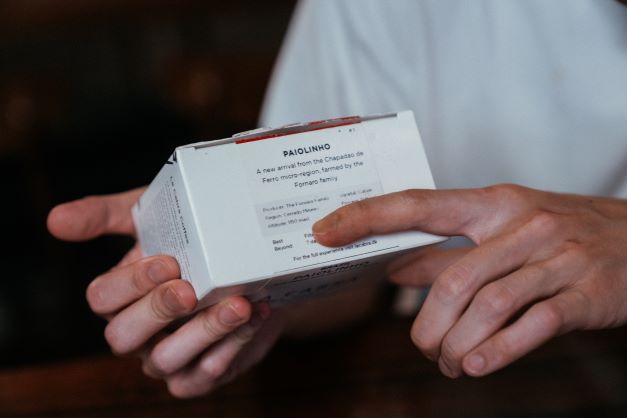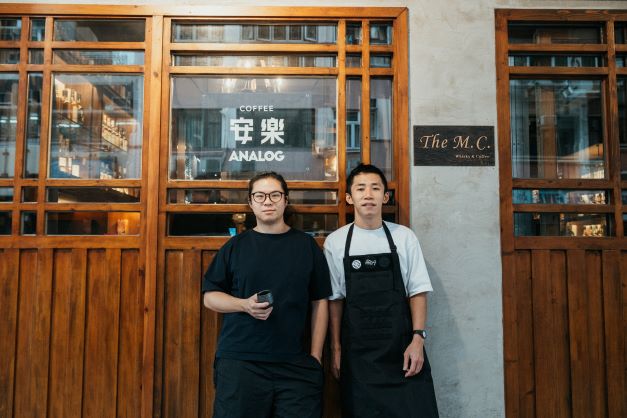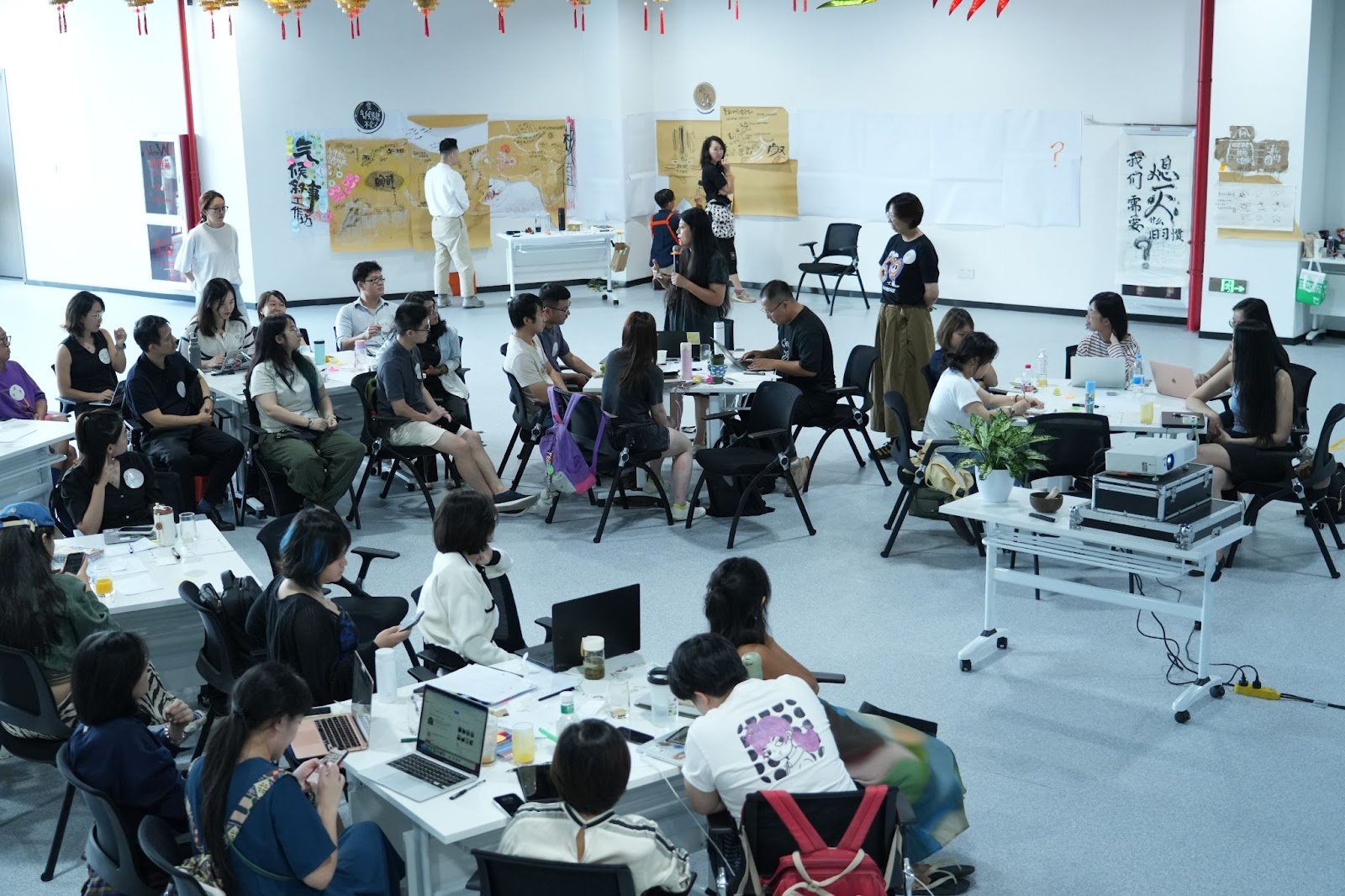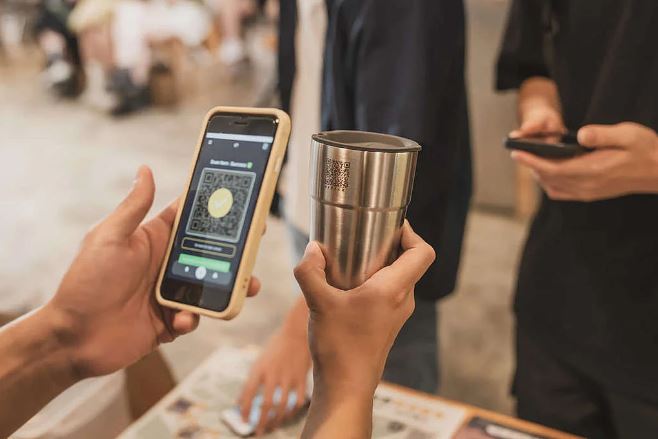Are you a coffee lover, a hipster perhaps? But did you know that coffee prices have spiked up recently because Brazil, the coffee giant, was affected by frost? Barista and Q-grader Goran Wong has more on how climate affects coffee production and how microclimate affects the quality of coffee. He’ll also share tips on tackling the climate crisis as a coffeeholic.
Climate emergency may sound very science-ee, but it’s very close to home. In the second half of 2021, our “Let’s Talk about Climate Change” series will focus on the “Climate Emergency and your appetite” theme. We’ll raise awareness of how this crisis is related to the Hong Kong community. And coffee is one of the foods most affected by climate change.
Coffee culture is gaining traction in Hong Kong. In a master class, Goran Wong, Q-grader and barista, shared his expertise on the beverage and the linkage between coffee’s aroma and the beans’ growing environment. With his environmental science background and his Q Arabica Grader qualification (Q-grader, in short), he made the impact from climate change on coffee, like taste and quality, in-depth but digestible.
Specialty coffee in a nutshell
The experience of specialty coffee is “from seed to cup”: from pinpointing the coffee’s origins to the planting fields and even the individual farmer. The aim is to honour the coffee’s taste, quality and the human side of its production. “Cafes with a certain scale would directly trade for coffee beans at the place of origin and interact with the farmers for the right beans. These cafes will provide technical support, and the fields will supply beans directly. This practice is more prevalent overseas and is used predominantly with industrial coffee production. But the vast majority of coffee we consume every day comes from industrial coffee production”, Goran said.

According to Goran, specialty coffee is about accentuating the quality of the coffee through third-party quality assurance systems. This way, coffee-lovers can find the products they love, and producers can be better paid. And here’s where Q-graders come in. “If there’s a nice cup of coffee, once I finish cupping (assessing) it and writing a report about it, the farmer can charge a higher price based on my report. It’s a win for everyone”, Goran said. On the other hand, commercial coffee involves intermediaries and the coffee trade system isn’t exactly fair, he said.
Baristas and Q-graders
Goran went on to explain the difference between a Q-grader and a barista. The former assesses coffee and doesn’t require brewing, whilst the latter specialises in brewing the best cup from roasted coffee beans.
Q-graders follow the procedures from the Coffee Quality Institute (CQI) and grade coffee directly. The criteria encompass unroasted and roasted beans and also touch on details like the fragrance after grinding, aroma, acidity and body.
CQIs usually further classify Arabica and Robusta into smaller groups, with Q Arabica Graders as the mainstream. Yet, Q Robusta Graders are less well-known, and the name Q-grader originates from this classification.
Climate change and a looming “coffee crisis”
Specialty coffee is all about aroma, and deep-diving into the geographic and microclimate is one of the keys. Goran has his thoughts on this topic as he shared an incident that shocked the coffee world but may be unheard of outside his industry. Brazil, the world’s largest coffee exporter, was affected by a severe cold front, and frosts have devastated coffee production in the region[1]. The impact is reflected in the coffee futures market, with prices spiked up to USD2 in a short time. Besides cold fronts, the Brazilian coffee industry has been affected by extreme weather lately, including a drought that persisted since late last year.
Extreme climate directly impacts harvests, and global warming poses more difficulties for coffee’s growing condition worldwide. Goran named the nemesis of coffee’s growth: leaf rust[2]. The higher the temperature, the better this fungus spreads. “Growing coffee is about altitude. Medium-grade coffee needs over a thousand metres of altitude. When global temperature rises, leaf rust will push further up and wreak havoc.
Coffee academy
Regular commercial coffee uses blend coffee, mixing coffee from different origins by a certain ratio. The end-product offers a balanced and consistent taste as a result. However, experienced drinkers will opt for single-origin coffee, which climate, soil and topography of the origin can all affect the coffee’s aroma. Specialty coffee is the top-tier product within single-origin coffee and is known for its unique aroma. The Specialty Coffee Association of America defines specialty coffee as “coffee scoring 80 or higher in a coffee cupping evaluation”.
Goran told us that coffee with a high cupping score, and unique aroma mainly comes from higher-altitude areas between 1,500 and 2,000m, since the microclimates of these areas are ideal for growing coffee. There are two well-known branches in coffee, Arabica and Robusta. Robusta is more pest and heat resistant, making it more popular and common in the commercial market. Specialty coffee, on the other hand, is an emerging challenger and uses almost entirely Arabica, though taking up a very small market share.
“Robusta usually is planted in lower-altitude and warmer areas. Our industry usually blends different types of Robusta beans to boost its body and good bitterness. But the whole experience won’t be too outstanding as you can still taste grass and wood”.
Conversely, Arabica is planted in mid-altitude areas around 1,000m to 2,000m high. Arabica is more valuable and needs a specific temperature range to nurture. A large temperature difference between day and night is essential, with daylight temperature around 20 C and not lower than 10 C at night. The low temperature could affect how coffee cherries grow and complicate the end product’s aroma. The temperature at night also can’t be too low as frosts may harm the coffee trees. Coffee farmers are careful to only harvest when the beans are ripe, so to ensure nutrients like sugar are more abundant.
However, with climate change warming up the world, coffee cherries are getting ripe faster than before. The fruits’ aromas are severely affected as a result and have lost their depth. Goran quoted a report from the April 2021 issue of Nature[3], depicting how climate change will significantly alter the quality and production of Ethiopian specialty coffee. “It was a remarkable conclusion. Because the world is getting warmer, mid-tier coffee beans will see a production boost, but specialty coffee is all about quality, and climate change will ruin the aroma that everyone is after”, he said.
Quick coffee guide
- Climate conditions suitable for nurturing coffee beans:
- Adequate and moderate rainfall with a distinct dry season
- Adequate and moderate sunlight
- Pleasant temperature between 14 and 24 ℃
- Coffee planting and altitude
- Areas between the Tropic of Cancer and Tropic of Capricorn have the right climate for growing coffee, and the vast majority of coffee farming activities are within this “coffee belt”
- Coffee plantations in tropical areas are usually on higher altitudes as the weather can’t be too hot
A scientific Q-grader
As a Q-grader, Goran’s job is to assess the beans’ aroma. “Q graders or cuppers in the world all follow a protocol in their work since assessing something is subjective. But there’s also an objective and scientific standard, and it’s a kind of art at the same time”, he said.
Goran didn’t start out in the coffee industry. He actually studied environmental science at university. He believes his awareness of science and the environment is a perfect match in his profession now, and he’s grateful for this shot in realising his vision.
Since young, Goran has been an avid hiker and is fond of Hong Kong’s nature, with Sai Kung’s Tai Long Sai Wan being his favourite go-to every summer. When he was in F.4, the area was caught in a controversial private land development proposal[4]. Goran then had his first taste in environmental activism as he joined other environmentalists in protesting outside the Cheung Sha Wan government offices. “Since then, I realised knowledge and skills are important for preserving the environment. I also figured out that if you love a place, you’ll have a strong urge to protect it”, he said.
Goran went on to study environmental science and earned a higher diploma in environmental auditing. He then earned a bachelor’s degree in environmental and energy studies, touching directly on topics like climate change, greenhouse gases, carbon audit for industries and ways to mitigate emission.
But Goran never went into the environmentalism field. Instead, he turned his hobby of brewing coffee into a career. His friend Andrew opened a cafe at that time, and by chance, he started brewing coffee for a living. Goran calls himself a midway-career-switch barista and learnt all essential knowledge himself. Soon after deciding on his path, he discovered the Q-grader qualification and pursued it to take his career further.
Short bio – Goran Wong:
- BSc(Hons) in Applied Science (Energy and Environment) after finishing Higher Diploma in Environmental Management
- Became a barista in 2020 and earned a CQI Q Arabica Grader qualification in the same year

Coffee lovers uniting for our climate
Goran found quite many cafes have paid much attention to reducing plastic, from using stainless-steel straws to introducing edible coffee cubs. But solving climate change as a cafe owner is another story. Some may even ask, “there isn’t much we can do, is there?”
He shared his view that addressing climate problems is directly related to our daily lives. Going back to basics in life and reducing carbon in all parts of life are the way to go. “Bring your cup. If you’re doing takeouts every day, the number does add up. If everyone brings their takeaway cup, we’d have fewer disposable takeaway cups by the tens of thousands, along with the carbon footprint”, he suggests to coffee drinkers.
As for shop owners, taking a step further towards carbon-neutrality may be off-putting, but it’s more feasible than it sounds. “Think about how to reduce electricity. Every baby step will add up towards something great, and this is especially true for air conditioning. Making sure the air-con is efficient is doing a great favour to both the environment and your bills – your effort will directly reflect on your wallet. Also, take a look at your electricity bill and think about what appliances you need. This isn’t professional auditing, but it can help a cafe make a difference”, Goran said.
“I’ve read through past articles from Greenpeace about addressing climate change in our daily lives. There was a great point: raise your own awareness to influence others and make a real impact. Like straws, if no one invented substitutes before, there’d be hardly anyone who would follow suit. So as cafe owners, we start putting in the effort ourselves, then we influence others. That’s how we help our climate together”.
About “Let’s Talk about Climate Change” series
Climate change is not only here, but it has also evolved to “Climate Emergency”. As global citizens, we should not ignore the crisis we are in. Yet sometimes if not all, we might feel the issue is too big for us or too far away. We are inviting people in our local community, from all walks of life, to share with us how they connect to and make the effort to deal with climate change. Read More



